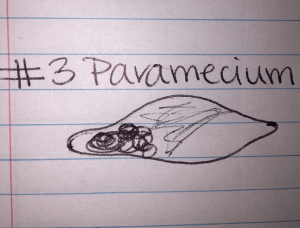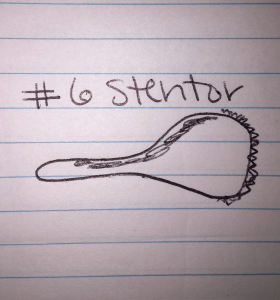Lab 2: Ciliate Challenge 8/30/18
Objective and Purpose
Our objective in lab was to become familiar with microscopes and to introduce ourselves to different ciliate samples. Our purpose was a little more specific in that in lab we furthered our knowledge of lab techniques and lab safety as well as the intricate style each individual ciliate possesses. This objective and purpose called for a great lab full of learning paired with hands-on experience.
Experimental Procedures
- Filled the wells half full with ciliate samples
- Placed the plate onto the microscope stage
- Observed the ciliates
- Recorded the observations
- Identified the ciliate
- Repeated steps 3-5 for different samples
Observations and Data
| # | Shape | Relative Size | Movement | Location in Media | Other Characteristics | Identification |
| 1 | Oval | Medium | Swift and sporadic | Bottom | Leading with dark spot at the head | Paramecium Caudatum |
| 2 | Short, Thick body | Large | Like a plastic bag in wind/spin | Top and middle | The black spots are in the tail | Lembadion |
| 3 | Plump middle & skinny ends resembling fins | Very small on x40 mag; about 30 across | Sporadic | All depths | Semi-transparent | Paramecium |
| 4 | Short and skinny like a toothpick | Very small on x40 mag; about 30 across | Consistently steady | All depths | Pink in color | Holosticha |
| 5 | Line, worm-like | On average, 1/6 of view on x40 mag | Worm-like, contracts when it touches something | Bottom | Calm, but quick to contract when feeding | Spirostomum |
| 6 | Funnel-like, cup | 1/20 of length on x40 mag | Twirl with tail down, leads with cone/broad side | Middle | Maneuvers around bacteria | Stentar |
*5&6 in chart as stated by Madison Ambrose*
Final Sample Storage
- Cleaned out pallet
- Rinsed with water
- Turned upside down on towel to dry
- Matched pipettes with the label on their pipette stand.
Interpretations, Conclusions, Next Steps
All six samples had varying shapes, sizes, movements, and ‘personalities’ about them. Although they all possess the universal trait of cilia, they way in which each sample used its cilia differed. These different uses include some things like: quick turns, steady constant movement, and contractions. To further explore the amazing and vast types of ciliate, I plan to continue to observe and -more importantly- compare ciliates. Through varying magnifications and even varying microscopes, I can better learn about the organelles each specific ciliate possesses. These microscopic organisms are incredible and demand more time to comprehend all they are capable of doing. I look forward to exploring these assets and furthering my knowledge of ciliates.






